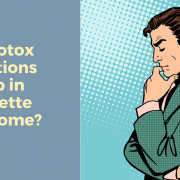Tourette Syndrome, OCD, and Formaldehyde in our Home
We have an 8-year-old child who has a combination of Tourette syndrome and mild obsessive compulsive disorder (OCD). Through nutrition, cleansing, and supplements over the past year, we have seen some dramatic improvements.
A couple of weeks ago we looked at some brand new homes. As soon as we walked in the door the smell of “newness” really hit our noses. I noticed that there was a warning flier on the counter cautioning those who may suffer from asthma or other respiratory problems that they could suffer a reaction from the formaldehyde fumes. It took us about 45 minutes to look at the two homes we were interested in.
As we got in the car and started driving home we noticed that our son’s behavior went down the tube; he became very irritable, whiny, and unreasonable. His tics also became quite intense. The thought that it could be the formaldehyde briefly crossed my mind. The next morning he was better, and that afternoon we looked at a few more “new” homes. Within about 30 minutes our son experienced the same reaction as the day before. I don’t think this was a coincidence.
I called the poison control center and found out that formaldehyde is pretty hard to get away from. It is in the following: glues, preservatives (it happens to be one of the ingredients in vaccines), building materials, permanent press fabric, latex rubber, paper making, disinfectants, dye, plywood, particle board, cosmetics, some shampoos, some paints, and insulation. New carpeting is often sprayed with this chemical, and high heat over 100 degrees or humidity, such as from shampooing your carpets, can re-release the fumes. Many dried herbs are sprayed with it to preserve freshness.
Most people who have a child with Tourette’s probably know to stay away from aspartame (NutraSweet). Aspartame is made in part from formaldehyde. When the product is consumed it reportedly breaks down into formaldehyde once again.
When I think back to our son’s history, his tics first started when he was about three. We had just moved into a brand new home. His OCD greatly intensified during the first part of first grade when we had finished the basement and just installed a new carpet. I don’t think formaldehyde is his only trigger, but it is definitely a major one. We would never have figured it out had we not gone to see those new homes. I hope our story might be of help to others out there.
ACN Latitudes greatly appreciates people sharing their experiences so we can put our findings together and open new avenues for everyone










I’m glad you found the trigger for your son. My son was diagnosed with Tourette’s shortly after he turned 7. The weekend before he entered his first grade classroom the carpet was cleaned, room painted and new construction built to house the indoor part of a new central unit without any ventilation. Since it was August and hot as soon as the unit was installed the air was turned on so all the construction dust, airborne contaminants from the carpet being cleaned and out-gassing from the paint was circulating throughout the room. He would have as many as 72 eye/facial tics while reading his first grade story for homework, impulsive, moody, had night terrors and was like the energizer bunny until he crashed at night. After much research he is now on a strict Feingold stage 1 (feingold.org) diet and we are chemical free at home and now at school. He is 11 and has been tic-free/symptom-free for about 3 years with the exception of ant killer being spread on the playground beside him which caused about a 2 month tic. We have learned any synthetic fragrance or product (furniture polish, insecticides, pesticides, ant killer, air fresheners, fragrant detergents/lotions/soaps) causes tics to resurface. We use all natural cleaners, detergents, lotions, soaps, etc from tropicaltraditions.com. I know what it’s like to see your child struggle with Tourette’s symptoms — I now know the joy of seeing that same child live a normal life again. I hope this helps
I work on sustainable construction projects. New home smell (or new car smell) is the result of furnishings and finishes off-gassing. Though some like it, for many of us (I have chemical sensitivities) it’s a nightmare. Luckily, the market for low- or no-VOC products (like paints, adhesives, and sealants) is growing, and it is possible to get particle board (or other engineered wood) with no urea-formaldehyde. Though the latter will often have a cost increase over traditional products, it’s worth it for our health! When necessary, air out furniture with particle board outside in direct sun and I’ve found that activated charcoal bags in dresser drawers or in the room that’s troublesome also helps with the odor from those products.
Those are good suggestions, RMG. We had no trouble finding no-VOC paint at stores like Lowe’s and Home Depot, not to mention paint specialty stores–as you say, the market is growing. I have relatives who always buy used cars to avoid the outgassing from plastics in new cars.
Thanks for those suggestions RMG. I agree it’s worth it. I have personally had neurological reactions to VOC paints. We had to paint most of the rooms in our house and paid a bit more for VOC-free. Was so glad we did!
Unfortunately, zero VOC paints are NOT zero formaldehyde or zero toxin. Volatile Organic Compounds are regulated by the Environmental Protection Agency only because of the propensity to create low level smog when combined with nitrogen and UV. Years ago, paint manufacturers lobbied the EPA to allow the use of what are called “unregulated chemicals” because even though they are toxic to humans, they dont contribute to smog. Remember, the EPA is not the HUMAN protection agency.
Most zero VOC paints still contain these unregulated chemicals and the manufacturers do not need to list them of the safety data sheets. They also do not have to list any ingredient that makes up less than 1% of the volume, not do they have to list any ingredient that is considered “proprietary”. When formaldehyde was eliminated from paint years ago, paint manufacturers created “formaldehyde precursors”, which are not detectable in a liquid state, but actually creates formaldehyde as the paint cures on the wall.
Please do not be duped by the claims that zero voc equals healthy. This couldn’t be further from the truth.